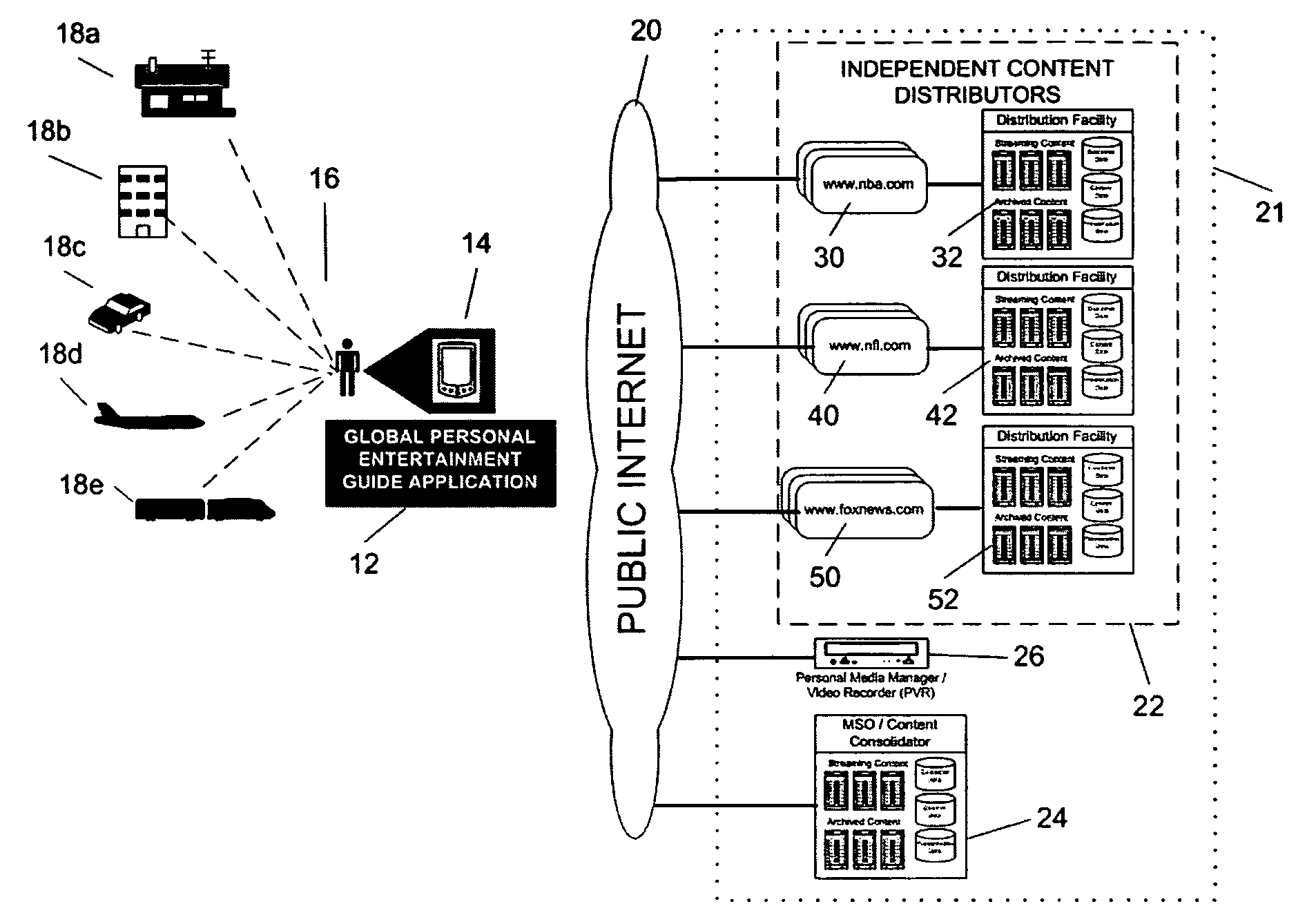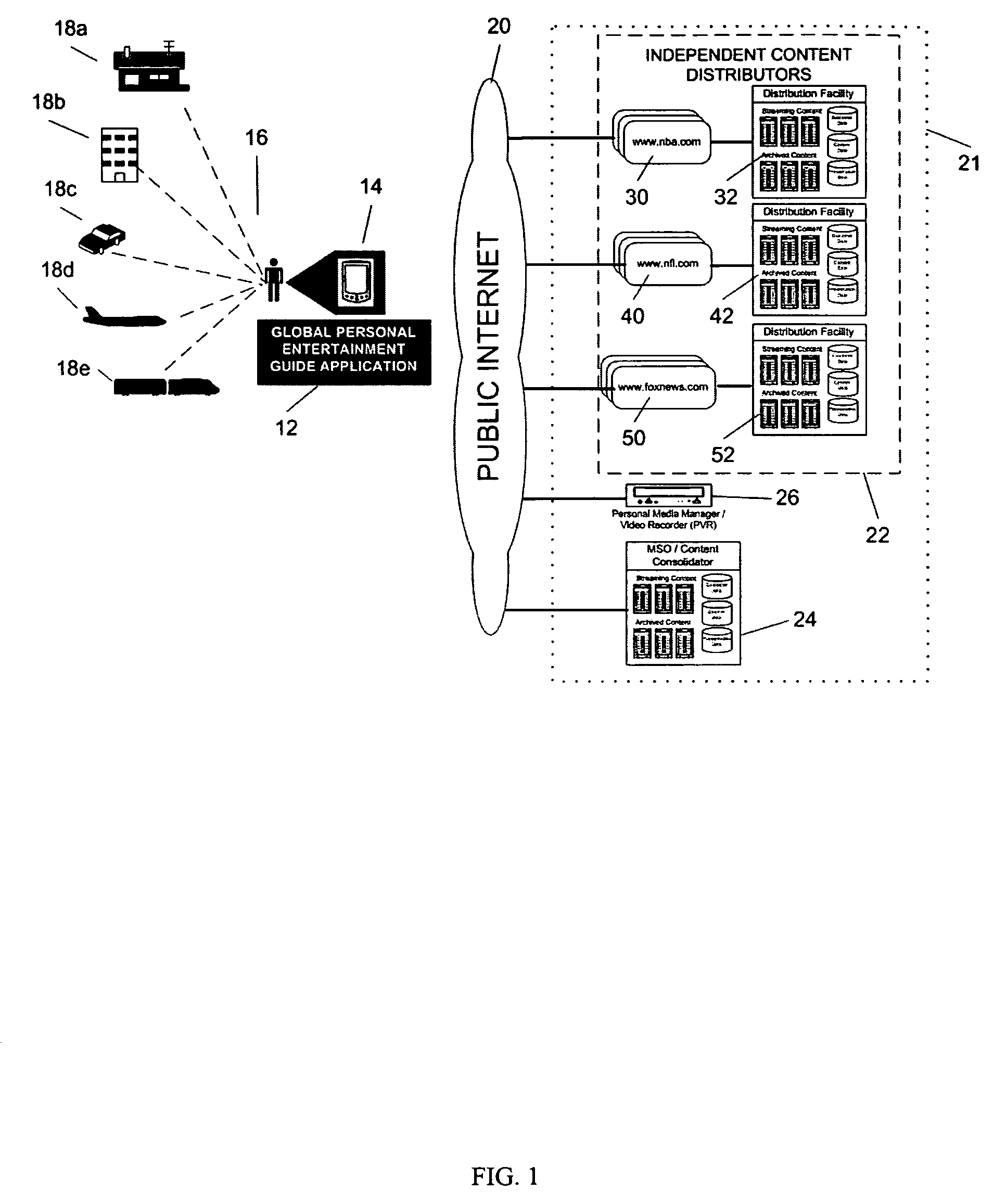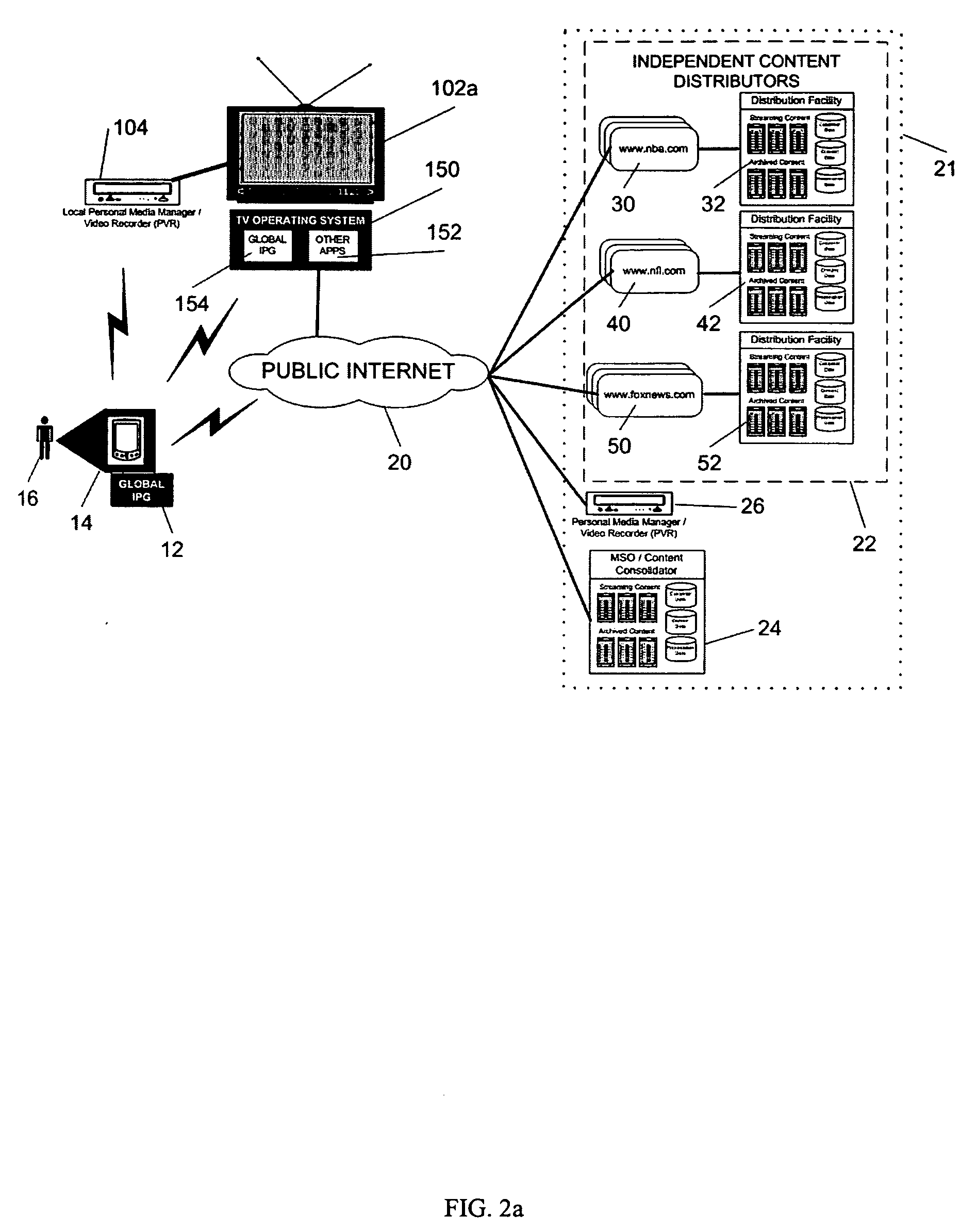However, while users could access recorded content on a specific media (i.e. CD, DVD, etc.) anywhere in the world, local radio and
television programming was limited to a broadcast
signal's range across airwaves.
However, assuming the New York content was being broadcast in Los Angeles, the user was forced to determine which channel it was playing on in the Los Angeles MSO system since the New York City channel was not necessarily programmed to be accessible from the same channel on the Los Angeles MSO'
s system.
Presently, there is no application or interface that allows a user to manage multiple subscriptions from multiple content owners in an easy to use format.
These disparate systems and devices are making the possibility of a persistent user experience more challenging and complex.
While attempts have been made to integrate computers and televisions in order to deliver all available content through a single device, these efforts have lacked the necessary
synergy to revolutionize the way people watch video content or programming.
One reason these efforts have been largely unsuccessful is that almost all attempts to present
television programming on a computer have been too technical for the average user as computers are generally geared toward interactive productivity rather than passive entertainment.
A second reason that users have not adopted
IPTV systems is because they simply replicate the existing television viewing experience or, in some case, decrease the overall television viewing experience by limiting available content or decreasing the overall viewer experience with sub-standard
video quality or an extremely small display screen.
These include: limitations on geographical broadcast rights, disparate content offerings between MSOs; stationary STBs; and the inability to use one MSO's STB on a second MSO'
s system.
Cable television MSOs do not allow a user to view local content from a distant geographical location via an STB.
Existing MSOs also limit the user to an IPG organized and controlled by the MSO, hindering the overall user experience and preventing access to and integration with independent content sources, such web-based content providers.
The user also has little control over the availability of specific content from a
cable television MSO.
For example, if the MSO chooses not to purchase rights to broadcast a specific content provider's channel, the user cannot access or integrate that specific content provider's channel onto the STB's IPG even if a separate content access relationship has been established.
In most cases, the STB would not be even able to connect to the second MSO'
s system.
Lastly, the user is also unable to customize the IPG to reflect personal preferences beyond what content is available either via the MSO's STB and the user's personal media
library.
And because these systems are fixed and limited in geographic reach, there are no present plans to unify cable system platforms such that users could use an STB from one MSO in a second MSO's broadcast territory.
Therefore, based on the cable industry's content provider-centric mentality, a user can not, and will not anytime in the foreseeable future, be able to easily port an STB from one MSO location to another outside of the MSO's service area.
Although the abovementioned reasons would prohibit a user from viewing one cable provider's content in a second content provider's geographical location, the last, and most obvious limitation of existing
cable television systems is portability.
A typical cable
television system includes the following components: a stationary
Set Top Box with a proprietary IPG that is typically is connected to the cable provider via a hardwire connection e.g.
coaxial cable; a
remote control; a television, which is typically too large to easily transport; an audio
receiver and speakers, which are also too cumbersome to easily transport.
Although current PVR's available today have limited
broadband or long-range
wireless communication capabilities, users can only remotely program the PVR to
record programming over
the Internet.
More importantly, if the user's home cable system or PVR does not offer a specific program channel or content source, these devices will not be able to provide the user with the desired content since it is not available in the home location.
Additionally, these systems focus on receiving content, but do not address
usability requirements between the device and the user, which is the critical difference between a basic
IPTV system, which is merely an attempt to replicate the current television viewing experience, versus a user-centric system of the instant invention that improves upon the existing television viewing experience.
There are several distinct limitations that redirection systems have that would also prevent the user from experiencing true mobility with a persistent user experience.
One glaring problem is the lack of content redundancy, such that if
the Internet connection between a user's redirection system and the remote location were unavailable, or if the physical location lost power, or if the content source were interrupted or unavailable.
The lack of content redundancy, in case the single content source becomes unavailable, is a major
disadvantage of these types of systems.
Additionally, users are locked into a single content provider and cannot access independent provider content from the
IPTV MSO device, nor do these systems manage
user authentication across disparate content sources.
Other IPTV MSOs limit access to their system by forcing the user to purchase a specific device in order to do so.
Some existing IPTV systems integrate a
media content creator; a media streaming engine with content storage, switching, IP
packet routing, and delivering capability; and a billing,
user authentication and management, content protection and
digital rights management capability, but do not provide explanation for how users would access their system any different than existing TV providers do today.
The act of merely making content available in some generic form via the Internet will not be sufficient to influence consumers to modify existing television viewing habits and start watching television on a computer.
To summarize, all current
television programming delivery systems have one or more of the following limitations that
restrict the overall user television user experience: a) they do not permit the user to control where and when television programming is viewed; b) they do not permit the user to customize and access a persistent IPG from one location to another or from
device to device; c) they do not permit the use to watch live television programming while in motion; and d) they require the user to watch television in what has been characterized as a “lean forward” fashion.
But in each case, existing inventions in one way or another limit the user from a “true mobility” experience whereby content sources, IPGs, and disparate MSOs can easily be managed, organized, and viewed from a
single application and can easily move from
device to device.
Additionally, no portable IPG allows for content to be received or orchestrated by a
mobile device and then be connected to a television monitor so that a “normal” television viewing experience can be preserved.
 Login to View More
Login to View More  Login to View More
Login to View More 


